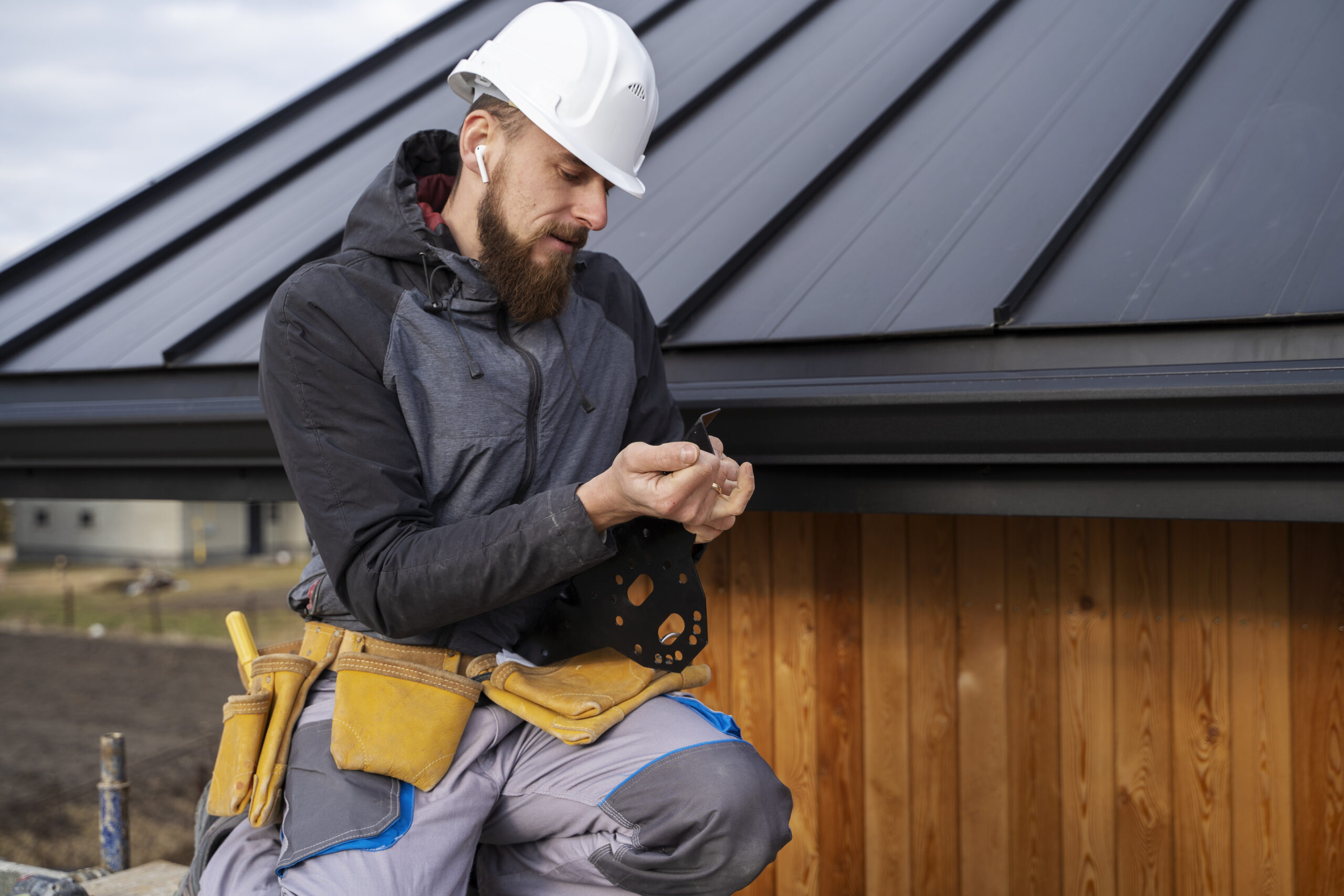What to Expect When Replacing the Siding on Your Condominium: A Detailed Guide
Replacing the siding on your condominium is a major renovation project that can bring considerable benefits including improved curb appeal, increased energy efficiency, and enhanced property value. However, such a project can temporarily disrupt daily routines for residents. Understanding the process and preparing for potential inconveniences can make the experience smoother for everyone involved. Here’s a comprehensive guide covering what to expect during a siding replacement project, including tips on safety, managing noise, privacy concerns, protecting your property, dealing with equipment and parking limitations, and minimizing disruptions for those with irregular work hours or who work from home.
 Safety Precautions
Safety Precautions
Safety is paramount in any large-scale construction project, and siding replacement is no exception. The process often involves high scaffolding, ladders, power tools, and materials that may pose risks if precautions aren’t followed. Contractors typically set up barriers and designate “no-go” zones to keep residents, particularly children and pets, safe.
Expect to see temporary fencing, caution tape, and safety signage around the work areas. These are necessary to ensure that residents stay clear of potentially hazardous areas. While contractors will do their best to minimize risk, residents must play their part in keeping their families and neighbors safe.
Owner Tips:
- Report Safety Concerns – If you notice any apparent safety hazards, promptly report them to the Property Management company. This might include unsecured equipment, improperly marked zones, or debris.
- Avoid Interference – Refrain from inspecting or entering the work zones yourself. Leave this to the contractors and project coordinators trained in safety protocols.
- Child and Pet Safety – If you have children or pets, set up reminders to keep them away from windows and balconies near the work areas.
 Noise Levels
Noise Levels
The siding replacement process can be noisy. Between power tools, hammering, and the movement of materials, expect significant sound disturbances. This can be especially challenging for residents sensitive to noise or those who work from home.
The project’s schedule will likely include specific phases where noise levels peak, such as demolition and installation. Contractors often aim to minimize disruption by working during standard business hours, but this can still be disruptive to some residents.
Owner Tips:
- Plan Ahead – Request the project schedule from the Property Management company so you can prepare for high-noise periods. This can help you plan outings or activities away from home during particularly loud phases.
- Invest in Noise Control – Noise-canceling headphones or white noise machines can significantly reduce indoor disturbances. Apps with soothing background sounds or podcasts can also help mask the construction sounds.
- Consider Alternate Workspaces – If you work from home, consider working from a library, coffee shop, or co-working space, especially during high-noise periods.

Privacy Considerations
Siding projects require contractors to work close to your windows, doors, and balconies, reducing privacy as workers move around the building. You might find contractors looking into windows as they work, and temporary access to balconies or patios may also be necessary. Additionally, some window coverings may need to be temporarily removed to allow for work on the siding.
Owner Tips:
- Use Temporary Window Coverings – If you’re concerned about privacy, consider hanging temporary blinds or curtains. Frosted window film can also provide privacy while still allowing light in.
- Schedule Coordination – Coordinate with the project coordinator to understand the work schedule, so you know which parts of your unit may be exposed on a given day. This can allow you to adjust your routine and enhance privacy when possible.
- Secure Personal Belongings – Remove or secure items near windows or balconies that may be disturbed or viewed during the project.

Risk of Damage to Exterior Fixtures
With constant handling of materials, scaffolding setup, and the movement of equipment, there’s a small chance that external fixtures, landscaping, or windows may get damaged. Although most contractors take precautions to prevent damage, it’s essential to prepare for unexpected incidents.
Owner Tips:
- Clear Work Areas – Remove personal items and fragile objects from decks, patios, lawns, and any other work areas. This includes items like potted plants, outdoor furniture, and decorations. Clearing these spaces will minimize the chance of accidental damage.
- Document Condition Before Work Begins – Take photos of your property before the project starts. These photos can serve as a reference in case you need to document any damage after the work.
- Verify Insurance Coverage – Discuss insurance policies with the Condominium Board or Property Management company. Confirm what is covered in the event of accidental damage and how the claims process works.
 Equipment Usage and Parking Constraints
Equipment Usage and Parking Constraints
Expect an increase in equipment and machinery around the building, including scaffolding, ladders, and material storage areas. These items will occupy a significant amount of space and may limit access to certain amenities or parts of the property. Additionally, parking spots may be temporarily blocked or reassigned to accommodate equipment, making it necessary to adapt your parking routine.
Owner Tips:
- Arrange Alternate Parking in Advance – Speak with your Condominium Board or Property Management company about temporary parking arrangements or permits. They may provide alternative parking spaces or direct you to nearby lots if your usual spot is unavailable.
- Be Mindful of Pathways and Sidewalks – Stay clear of walkways near equipment or materials. Follow all signage and barriers put up to restrict access to these areas, as this helps keep everyone safe.
- Plan Alternative Routes – Familiarize yourself with alternate building entrances and exits to avoid construction zones. This will save you time and minimize potential safety risks.
 Blocked-Off Areas and Restricted Access
Blocked-Off Areas and Restricted Access
During the siding replacement, you may find that certain building entrances or exits are temporarily blocked. Contractors often barricade or place signage in these areas to direct residents away from construction zones, ensuring that everyone remains safe.
Owner Tips:
- Know Your Alternative Routes – Familiarize yourself with alternative ways to access your building. This can be particularly helpful for residents with mobility issues, who may need assistance with these temporary detours.
- Coordinate with Property Management – Ask the Condominium Board or Property Management company to notify residents of any changes to building access so you can plan accordingly. It’s also helpful to stay updated on these changes to avoid inconvenience.
 Vibrating Walls and Structural Disturbances
Vibrating Walls and Structural Disturbances
It’s common for walls to vibrate or shake when siding is being installed, as workers drill, hammer, and secure materials to the building. This can affect picture frames, shelving, and other wall-mounted items, so taking steps to protect these items is advisable.
Owner Tips:
- Remove Valuable Wall-Mounted Items – Take down items such as picture frames, mirrors, clocks, and shelves from walls that may be affected by vibrations. This precaution will help prevent accidental falls and potential damage to your belongings.
- Check for Loose Items Periodically – If you keep items on walls during construction, check them periodically to ensure they haven’t loosened from the vibrations.
 Disruption for Residents with Irregular Work Hours or Those Working from Home
Disruption for Residents with Irregular Work Hours or Those Working from Home
Residents who work from home or have non-traditional work hours will likely feel the greatest impact. Construction noise, restricted access to parts of the building, and reduced privacy can make it challenging to maintain a regular work routine.
Owner Tips:
- Request the Project Schedule – Obtaining the work schedule from the project coordinator or Property Management company can help you plan around peak construction times. If you have meetings or focused work hours, it may be beneficial to know when quieter times are expected.
- Explore Alternate Workspaces – Consider temporarily working from a library, co-working space, or even a friend’s home during the most disruptive periods of construction. This may be particularly useful for remote workers who need quiet environments for video calls or concentrated tasks.

Final Thoughts
Replacing the siding on a condominium building is a worthwhile investment that can enhance the building’s appearance, energy efficiency, and durability. However, it does come with temporary inconveniences, especially for residents who live and work in the building. By preparing for potential disruptions, coordinating with the Condominium Board or Property Management company, and understanding the project’s progression, residents can better navigate these changes and stay informed throughout the process.
It’s essential to keep open lines of communication between residents, contractors, and the Condominium Board. Property managers and project coordinators are there to address concerns, share updates, and help make the experience as seamless as possible. With some advance planning and flexibility, you can adapt to the temporary changes and enjoy the benefits of a refreshed, more durable property exterior once the project is complete.

